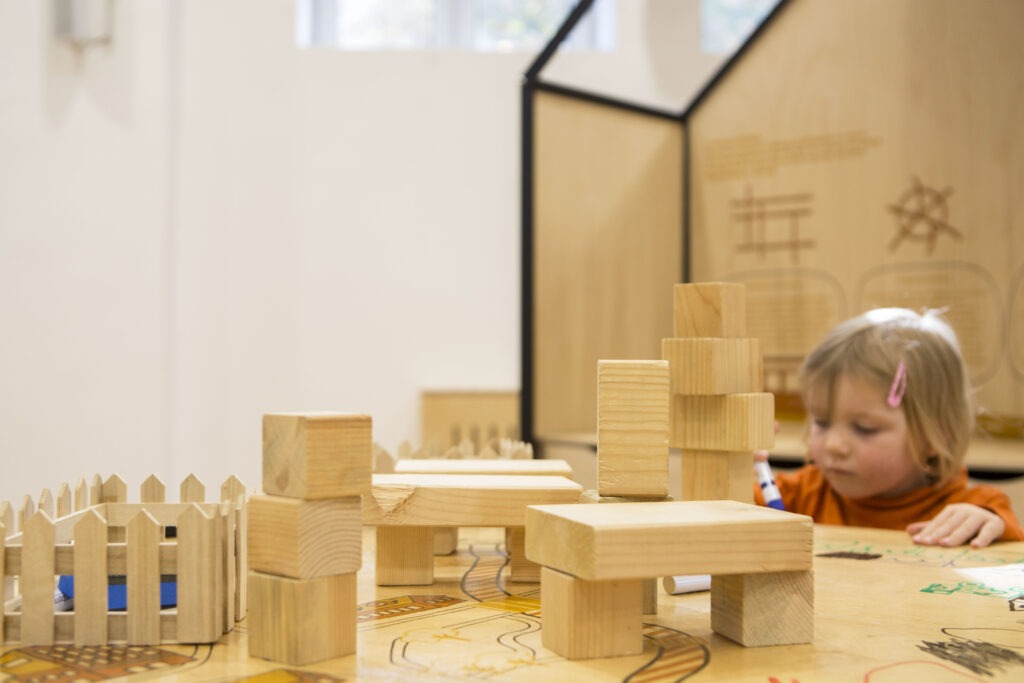
Heba Safey Eldeen
Member, UIA Architecture and Children Work Programme
Children’s cognitive functioning and development vary across different domains, cultural contexts, and conditions. However, there are common features that dominate their cognitive growth, particularly during middle childhood (ages 6 to 12). These features are often developed through children’s interaction with their surroundings. This is where Built Environment Education (BEE) plays a crucial role in fostering children’s cognitive development. While the UIA Architecture and Children Work Programme supports children up to 18 years old, this article focuses specifically on the cognitive development of middle childhood through BEE. Drawing on educational, psychological, and environmental behavioural theories, the goal is to link the UIA Architecture and Children Work Programme’s BEE practices with their theoretical foundations related to children’s development. We aim to inspire greater collaboration between architects and educators in creating better global citizens.
Middle Childhood
According to educational psychology, middle childhood is a phase marked by exploration. At this stage, children’s world expands beyond the family, and they engage with the broader social and urban context, which influences their motor, emotional, and cognitive development (Hoff, 2003). Children seek more freedom and begin to understand their rights. The education they receive at this stage helps them build self-confidence and independence, ultimately shaping them into proactive citizens (Chawla, 1992; Erikson, 1994; Eccles, 1999). Piaget’s theory of cognitive development identifies this phase as the concrete operational stage, during which children become more logical and organised. They develop a richer understanding of space and its geographical context, and they can give clear directions and perform mental rotations to navigate from one place to another (Piaget & Inhelder, as cited in Matthews, 1992).
Environmental behaviour studies show that this is also the period when children begin to build a personal image of their environment. They develop environmental perception and an appreciation of spatial representations, such as maps and drawings, and relate these to real places (Tuan, 1977; Matthews, 1992; Plester, Blades, & Spencer, 2006). They also start to understand human aspects like privacy and personalization, marking a significant shift in growing independence and self-identity (Matthews, 1992). Children at this age are the heaviest users of outdoor environments, and these spaces become a key part of their experiences. Cobb describes middle childhood as a special time when children have the greatest opportunity to explore an ever-expanding range of places (Cobb, 1969; Chawla, 1992; Chatterjee, 2005).

The Children-Built Environment Relationship
According to Matthews, children’s environment is typically defined as a combination of social, cultural, and physical contexts. Various interdisciplinary studies have explored how children interact with and relate to different types of environments (Matthews, 1992). The existing literature adopts a multi-disciplinary approach, incorporating perspectives from fields such as geography, anthropology, developmental psychology, and environmental psychology, reflecting the complexity and multifaceted nature of children’s lives (Bronfenbrenner, 1979; Moore, 1985 & 1988).
This article seeks to highlight the dynamic relationship between children and their physical surroundings. Paul Gump introduced the concept of “setting coercivity,” emphasising that children’s behaviour is directly influenced by the qualities of their environment. Through observational research on children in various settings, Gump found that many aspects of children’s behavior changed as they moved between locations, shaping their experiences and worldviews. He also noted that the behaviour of different children in the same setting was more similar than the behaviour of the same child in different settings. Gump concluded that environmental settings provide a context that, by design, shapes children’s behavior.
Further expanding on this, Moore and Young developed a “behaviour-environment ecological framework,” which explains how children navigate everyday environments. They categorised their model into three interconnected realms: the physiographic landscape (spaces, objects, people, and natural and built elements), the social space (human relationships and cultural values), and the inner space (the psychological and emotional life of the individual). Children exist simultaneously in all three realms, and the interactions between these realms influence their perception, use, and adaptation of their built environment to meet their needs and wants (Gump, 1979).
BEE for Middle Childhood
Based on these studies, it is clear that architecture and the built environment ARE key to children’s cognitive development. The UIA Architecture and Children Work Programme offers numerous resources, including Built Environment Education practices, charters, guidelines, webinars, publications, awards, interviews, websites and social media platforms, to support this mission. We DO NOT design built environments. Rather, we help children understand, critique, design, reuse, conserve and sustain the built environment, reshape and better their lives through BEE.
As a relatively new field, BEE is in high demand for its knowledge base and diverse approaches. However, most resources have historically come from Western countries, making them less accessible to developing nations. Nevertheless, BEE practices are expanding globally, including in the Middle East and the Global South, with new methods emerging to educate children about architecture, history, and sustainable cities. According to the World Bank, this education aligns with the top 10 skills needed by 2025, including critical thinking, creativity, problem-solving, and leadership.
Today, BEE practices are contextualised globally, prioritising key topics, intended learning outcomes (ILOs), and effective delivery methods, along with tools for monitoring, assessment, and evaluation. These formats range from simple indoor board games to complex, design-build participatory urban interventions and installations. BEE also spans several inter, trans, and multidisciplinary fields of inquiry. Curriculum and syllabus design take into account both educational taxonomies and diverse learning styles, such as multiple intelligences. A combination of theoretical and empirical research methods—such as data gathering, socio-spatial fieldwork, observational, and investigational tools—are employed.
Our website and social media channels offer multiple resources, including guidelines, examples, reports, and links to online courses and global practices, as well as connections to relevant organisations. We developed the UIA Charter for Built Environment Education for Children and Young People to promote and support urgent action for the advancement of built environment education worldwide. The charter provides a framework offering direction to governments, institutions, architects, and educators involved in developing and implementing BEE programmes. Additionally, the UIA Golden Cubes Awards recognise outstanding BEE practices from schools, institutions, and individuals. We also conduct research, issue reports, and host scientific seminars on the topic, providing insights into children’s development.
Conclusion
This article reviewed the cognitive qualities of middle childhood, highlighting how architecture and the built environment contribute to the development of sensory-motor, emotional, and cognitive skills. The middle section explored how children’s perception and behaviour are shaped and reshaped by their experiences within various realms, geographies, and urban settings. The concluding part emphasised that architecture and the built environment not only influence children’s development but serve as a vast, open resource for cultivating critical thinking, active learning, problem-solving, creativity, leadership, technological skills, resilience, and ideation.
We believe that Built Environment Education (BEE) is a moral mission; knowledge gained through BEE has consistently proven to help children and young people become better individuals. Regardless of location, climate, building materials, design culture, or other architectural factors, BEE is an ethical pathway to fostering sustainable thinking worldwide. This article is a call to further adapt BEE, with the goal of enriching both theoretical and practical aspects of architecture.
Keywords:
Architecture and Children, Built Environment Education, UIA Architecture and Children Work Programme, BEE Practices, Middle Childhood Cognitive Development, Architecture and Children Development
Links:
https://www.architectureandchildren-uia.com